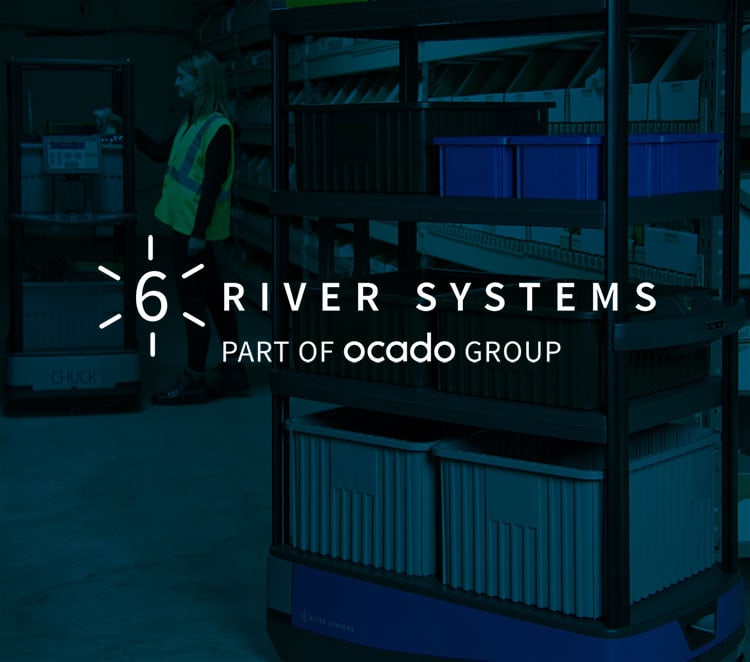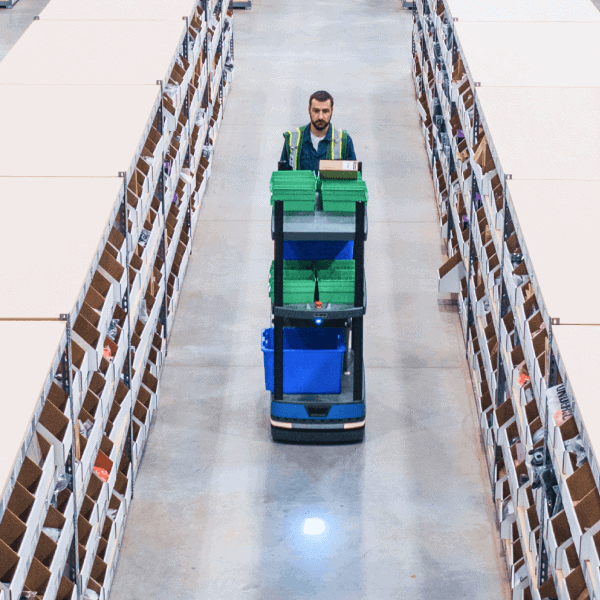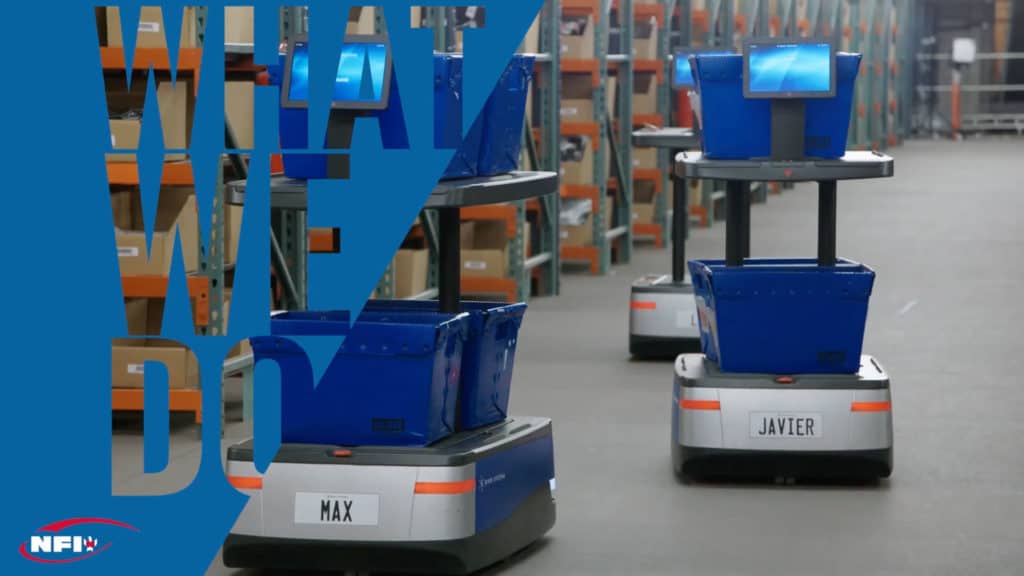E-commerce is on the path to taking over retail. According to a 2018 NPR/Marist Poll, 69% of Americans say they’ve purchased items online. In 2017, there were over 215 million digital shoppers in the U.S. By the third quarter of 2018, e-commerce sales accounted for up to 10% of total U.S. sales.
With the boost of modern one-click shipping, warehouse, distribution and fulfillment center leaders are feeling the need for more streamlined logistics and greater efficiency more than any other industry. To accommodate demand, many businesses are turning to smart automation solutions like collaborative mobile robots, or cobots.
In this post, we’ll review a few of the biggest benefits of using cobots in logistics. But first, let’s take a quick look at the history of collaborative robots.
The evolution of cobots
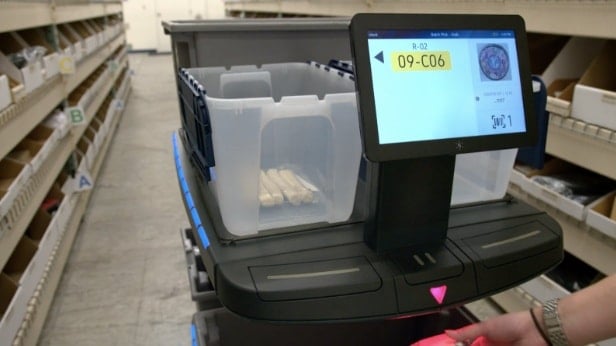
The first cobots began development in the 1990s — just in time for the dot-com boom between 1995 and 2000. They started as robotic arms on conveyor belts, unloading containers and loading them to the conveyor. Today, they’re enhanced with artificial intelligence.
Cobots now have improved dexterity, offering more assistance to human workers. They’re smarter and mobile, and they’re flexible and scalable compared to traditional automation solutions, such as conveyor systems. Unlike conveyors, cobots don’t require any permanent or costly infrastructure changes; instead, they integrate easily within your existing infrastructure.
It’s no surprise the popularity of cobots is steadily rising. In fact, experts project that the cobot industry could grow from just over $100 million last year, to over $3 billion by 2020.
Benefits of warehouse cobots in logistics
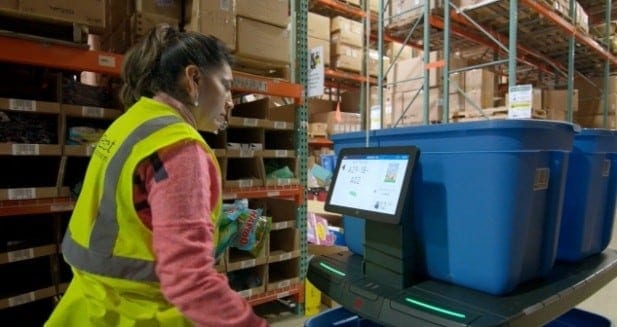
There are five main benefits associated with using warehouse cobots in logistics. Let’s review.
Save money & boost revenue
The initial costs for cobots are quickly returned in the form of enhanced productivity and cost savings once you begin using them in your warehouse. Companies realize a return on investment in a short period, especially when compared to other automation solutions.
Warehouse cobots save warehouses money by enhancing the extent of human labor required to operate their facilities. Cobots aren’t a replacement for your human workers; instead, they augment the work of your associates to boost productivity. For example, cobots like Chuck by 6 River Systems leverage artificial intelligence and machine learning to optimize tasks and plan the most efficient picking routes in real-time, eliminating unnecessary walking. By making logistics processes more efficient, you’ll free up your associates to focus on more complex tasks.
Easy installation and programming
In some industries, businesses delay adopting new technology because it’s complicated and time-consuming to implement. But that’s not the case with warehouse collaborative robots.
Warehouse cobots are simple to install and train to meet the needs of your business. The software is easy to program, allowing businesses to get cobots up and running in a few short weeks.
Plus, as mentioned previously, there’s no need to make any changes to your infrastructure when implementing warehouse cobots. And, thanks to their intuitive operation, the onboarding process for cobots is a lot shorter than with other automation solutions.
Providing a safe working environment
On-the-job injuries hurt more than just your workers; workplace safety hazards can hurt your bottom line, as well. Workplace injuries reduce productivity and can cost you in workers’ compensation expenses.
However, when you implement warehouse cobots, you’re reducing the physical workload for your associates. This means less strain on their bodies from physical labor and fewer chances of getting injured. Cobots also help to reduce the risk of injuries caused by traffic and congestion in aisles by eliminating unnecessary walking.
In facilities where hazardous materials or packages are handled, or environments where having a steady hand is key, using cobots can reduce the risk of injury to human employees. Cobots are also likely to be more efficient in performing these tasks since they aren’t slowed down by the weight of the product or the fear of harming themselves or others.
Reducing human error
We’re all prone to making errors every now and then. But allowing this to happen too often can hurt your profits, not to mention your company’s reputation. Packing the wrong items is one issue that can occur due to distractions or fatigue.
That’s what makes cobots efficient — not only are they programmed to guide users through specific tasks, they have built-in quality control measures like barcode readers to ensure the tasks they are assisting with are being completed accurately.
Improving productivity
Cobots like Chuck by 6 River Systems guide associates through each task, ensuring that your human workers remain focused, as well. Workers can pick and pack more items in a short time, without the worry of injury or human error. This enables your staff to focus on more complex tasks and duties that can boost production and revenue.
The increase in output and decrease in human error makes cobots a smart investment for warehouses across the nation (and globe).
Choosing the best collaborative robots for logistics
With all the benefits they offer for logistics, it only makes sense that more companies are adopting warehouse cobots.
When considering collaborative robot solutions, look for a company that allows you to scale your cobot count with flexible options. For example, solutions such as Chuck by 6 River Systems allow you to rent additional units as needed to accommodate periods of increased demand, returning them when demand returns to normal. The ability to increase and decrease the number of units as needed makes it possible to adapt to seasonal trends that lead to the rise and fall in demand.
Agility is everything in today’s fast-paced logistics landscape.
Ready to learn more about cobots for logistics? Read our 3PL case study to learn how one top-ten 3PL slashed new hire training time by 10 days, doubled pick rates, and improved order accuracy to 99.9% with the help of 6 River Systems.
